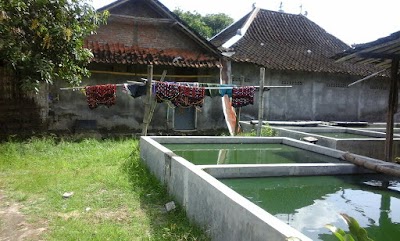Pagwi (Pagwi)
Overview
Pagwi, nestled in the East Sepik Province of Papua New Guinea, is a quaint yet captivating locale that offers foreign tourists a unique glimpse into the rich tapestry of indigenous culture, breathtaking landscapes, and traditional ways of life. Located along the mighty Sepik River, Pagwi serves as a gateway to one of the world’s last great wildernesses, where age-old customs and unspoiled nature converge to create an unparalleled travel experience.
The history of Pagwi is deeply intertwined with the storied past of the Sepik River, the longest river in Papua New Guinea, which has been the lifeblood for the communities flourishing along its banks for millennia. Pagwi itself has long been a pivotal trading post and a vibrant hub of cultural exchange. The local communities maintain a profound connection to the river, integral to their daily lives and traditions. Visitors will often find inhabitants engaged in traditional activities such as fishing, canoe crafting, and art-making—practices passed down through generations.
One of the most significant features of Pagwi is its role as an entry point to the greater Sepik River system. For adventurous travelers, this offers an extraordinary opportunity to embark on riverine expeditions leading into the heart of Papua New Guinea’s most remote regions. Guided tours often take visitors to nearby villages, renowned for their elaborate spirit houses, or haus tambaran, which serve as cultural repositories and places of worship. Inside these spirit houses, you can witness an astonishing array of ancestral carvings, totems, and ritualistic artifacts, each telling a story of the region's spiritual and social heritage.
In addition to its cultural riches, Pagwi is surrounded by an incredibly diverse ecological landscape. The region’s wetlands and tropical rainforests are home to a plethora of wildlife, making it a haven for nature enthusiasts. Bird watchers will be thrilled by the presence of exotic species like the King Bird of Paradise and the brilliant Raggiana Bird of Paradise. The serpentine waterways and lush vegetation also provide ideal conditions for spotting crocodiles, revered by locals and holding a special place in their mythological lore.
The significance of Pagwi extends beyond its historical and ecological attributes. It has become an important site for ethnographic study and tourism, attracting researchers, filmmakers, and culture aficionados from around the globe. Documentaries and academic studies often focus on the traditional lifestyles of the Sepik River communities, highlighting their unique ability to maintain cultural identity despite the pressures of modernity. For tourists, this means an authentic and immersive experience far removed from the typical commercial tourism circuit.
Staying in Pagwi offers a rustic charm that perfectly complements the setting. Accommodation options range from basic guesthouses to river lodges, where you can unwind in the serene ambiance only the Sepik River can provide. These stays often include meals prepared by local chefs, giving travelers a taste of indigenous Papua New Guinean cuisine. Expect hearty servings of sago, yams, and freshly caught fish, often accompanied by locally grown vegetables and tropical fruits.
For those interested in handicrafts, Pagwi does not disappoint. The region is famous for its intricately woven bilums (traditional string bags), wood carvings, and artifacts, often crafted by skilled local artisans. These items make for memorable souvenirs that capture the essence of Sepik artistry and serve as tokens of your journey through this fascinating part of the world.
In summary, Pagwi is more than just a destination; it is a journey into the soul of Papua New Guinea. It offers a harmonious blend of history, culture, and nature, providing foreign tourists with an unforgettable adventure. Whether you are exploring the mystical spirit houses, meandering through the winding waterways, or simply soaking in the quiet beauty of the riverbanks, Pagwi promises a captivating and enriching experience. This small but significant community stands as a testament to the enduring spirit of the Sepik people and the timeless allure of their homeland.








